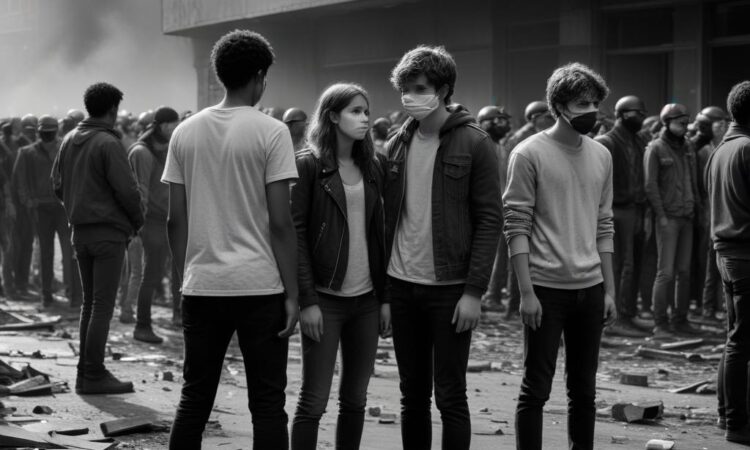Kids and the Summer Riots: A Thrill Seekers’ Story?
Okay, so you’ve probably heard about the summer riots. Crazy scenes, right? Looting, fires… the whole shebang. But something’s been buzzing around that’s kinda blowing my mind: a bunch of kids were involved. Not just a few, either. We’re talking a significant number.
Now, a new report from the children’s commissioner is saying something pretty interesting. It seems a lot of these kids weren’t necessarily driven by anger or political motivations. Nope. The report suggests many were simply caught up in the moment, making impulsive decisions. Think of it like this: it was less a planned rebellion and more… a really, really bad case of peer pressure mixed with a hefty dose of “ooh, shiny!”
I mean, picture this: you’re a kid, bored out of your skull during the summer holidays. Suddenly, there’s this crazy energy in the air. Your friends are there, and everyone’s doing something wild and reckless. The thrill of it all, the excitement, the feeling of being part of something huge… it can be seriously tempting, especially for kids who might be looking for a bit of excitement or a sense of belonging.
The report doesn’t excuse the actions, obviously. Rioting is wrong, and the kids involved need to take responsibility. There are consequences to their actions, and they need to learn from this. But understanding the *why* is crucial. It’s not about letting them off the hook, but about understanding the complexities of what happened.
It’s easy to point fingers and shout “bad kids!” But it’s more nuanced than that. The report highlights the importance of understanding the social and environmental factors that might have led to these impulsive choices. Were there underlying issues? Lack of positive role models? A feeling of disconnection from their community? These are all questions that need exploring.
Think about it – the summer holidays can be a tough time for some kids. Lots of unstructured time, potential for boredom, and maybe a lack of positive engagement. This can leave some young people feeling vulnerable and more likely to make rash decisions. Throw in the intoxicating atmosphere of a riot, and you have a recipe for trouble.
So what can we learn from this? Well, for starters, we need to understand the root causes. We need to invest more in youth services, provide more engaging activities during the holidays, and make sure kids feel connected to their communities. It’s not just about punishing bad behaviour; it’s about preventing it in the first place.
This isn’t about making excuses. It’s about understanding the psychology behind the actions of these children. It’s about recognizing the influence of peer pressure, the allure of excitement, and the underlying factors that might have made them vulnerable to such impulsive decisions. This isn’t about condoning the riots, but about learning from them and working towards a future where such events are less likely to happen.
The report calls for a more preventative approach, focusing on early intervention and providing positive alternatives for young people. We need to give kids something better to do than join a riot. We need to offer them opportunities, support, and a sense of belonging. And we need to understand that sometimes, even seemingly small things can lead to big, and unfortunately, destructive consequences.
Ultimately, this is a complicated issue with no easy answers. But by understanding the motivations behind the children’s involvement, we can begin to build a better future where kids feel empowered and supported, and where impulsive decisions leading to such destructive outcomes become less likely. It’s a long road ahead, but it’s a crucial conversation to have.
Let’s hope we can learn from this and prevent similar situations from happening again. The children involved need support and guidance, and the community as a whole needs to address the underlying issues that led to these events. It’s a call for a more proactive and understanding approach to youth engagement and support.

